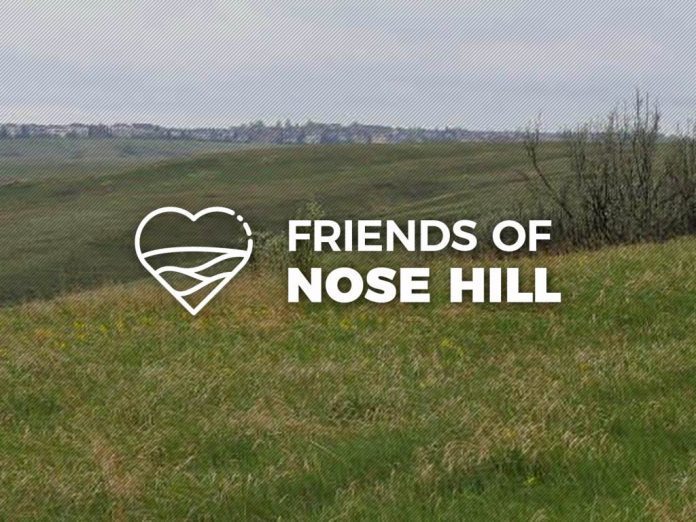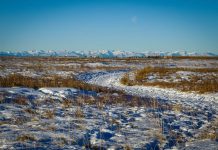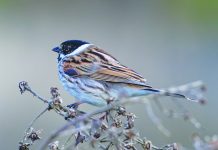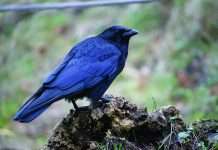Nose Hill provides spectacular viewpoints to interpret the geological history of the Bow River valley and its tributaries, as well as the uplands across the valley to the south. There is a glacial erratic in a small coulee. About 45 archaeological sites represent 10,000 years of human occupation. The Park is bounded by present-day Beddington and Nose Creeks. Big Hill Springs Coulee represents what remains of the earlier glacial spillway.
Major and shallow ravines in the Porcupine and Many Owl valleys are at risk because they support a closed canopy of tall willow shrubs, aspen, and balsam poplar forests. This is wildlife habitat, like rough fescue grassland.
Observers in a 1993 benchmark study recorded that weekday recreational users were three times as more likely to use the plateau and slopes, while weekend users more often used the ravines. Now, only the plateau is off leash and paved pathways are a route to the top.
A total of 151 wildlife species were found, including 127 bird, 22 mammal, and 2 amphibian species. No organized trails near a breeding ground (lek) of the Sharp-tailed Grouse, options for deer movement into Nose Hill, limited human and dog use to protect the mule and white-tailed deer, as well as the American badger. Analysis of trail condition and use was done by 27 volunteers from late July to late September. Trained volunteers collected wildlife field data. A sample of birds was conducted at 23 sites during the breeding period in early June to early July. Small mammal study was completed of mice, voles, and shrews. A review of past and current land uses revealed that some areas were damaged by vehicles, grazing, and gravel extraction but are slowly recovering. Since regeneration on its own may take decades, remediation was warranted.










